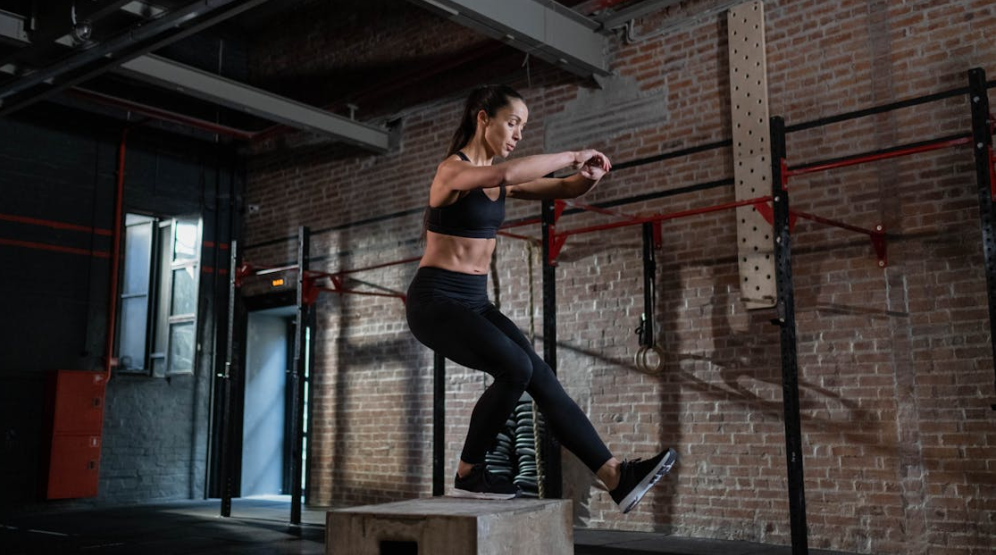
The Power of Plyometrics: Benefits for Speed and Strength
Plyometric training benefits tap into the muscles' stretch-shortening cycle, enhancing the neuromuscular system's efficiency. This article explores the myriad benefits of plyometrics and how they can be a game-changer in your fitness regimen, whether you're an aspiring athlete or a weekend warrior.
What is Plyometrics?
At its core, plyometrics involves exercises that make muscles exert maximum force in short intervals of time. The goal is to increase the power (speed-strength) of subsequent movements.
This training type uses the muscle's natural elastic properties and the stretch reflex to generate faster and more forceful contractions. Common plyometrics for athletes include jump squats, box jumps, burpees, and clap push-ups.
How Plyometrics Boost Speed and Strength
Plyometric training is highly effective in improving athletic performance. By practicing high-intensity vertical and horizontal jumps, bounds, and quick, forceful contractions, athletes can develop fast-twitch muscle fibers. These fibers are crucial for sprinting and explosive starts.
Regular incorporation of plyometrics can dramatically improve the time it takes for a muscle to reach peak force.
Benefits for Athletes
For athletes, plyometrics offers specific advantages that are hard to replicate with other forms of training:
Increased Muscle Power
Athletes can see significant gains in overall muscle power, aiding in faster sprints and higher jumps. These improvements are due to the efficient activation of muscle groups and enhanced neuromuscular responses during explosive movements.
Enhanced power also contributes to better performance in agility drills, making athletes more versatile and competitive in their respective sports.
Improved Speed
By enhancing the reaction of fast-twitch muscle fibers, plyometrics can lead to quicker off-the-mark speeds, which are crucial in almost all sports.
This rapid speed development can be a decisive factor in sports requiring quick transitions and explosive actions, like soccer, basketball, and track events, making plyometrics an essential part of athletic training.
Enhanced Endurance
Plyometric training also helps improve muscular endurance, allowing athletes to maintain peak performance for longer durations. This increased endurance is crucial during late-game situations or final sprints, where sustained energy output can be the difference between winning and losing.
Regular plyometric workouts condition the body to endure stress and fatigue, enhancing an athlete's ability to perform under pressure while maintaining a high level of performance.
Better Coordination
Performing complex plyometric movements improves neuromuscular coordination and fine-tunes motor skills, thereby significantly enhancing overall athletic ability.
This training teaches the body to respond more effectively to sports-specific scenarios, optimizing reaction time and movement precision. As a result, athletes can execute skilled maneuvers with greater ease and efficiency.
Injury Prevention
Strengthening the muscles and tendons through plyometrics can reduce the risk of injuries that are common in high-impact sports. By enhancing the resilience and elasticity of these structures, athletes can better withstand the stresses of sports like basketball, soccer, and track.
This preventive benefit makes plyometrics an essential part of conditioning programs to reduce occurrences of strains, sprains, and other musculoskeletal injuries.
Incorporating Plyometrics into Your Routine
Plyometric training should be approached with a structured plan, especially if you are new to this type of workout. Here’s a deeper look into how to safely and effectively integrate plyometrics into your fitness routine, ensuring you maximize benefits while minimizing the risk of injury.
Starting with the Basics
If you're new to plyometrics, begin with basic exercises that allow you to focus on your form rather than intensity. Exercises like jump squats, box step-ups, and skipping are great starters.
Aim to perform these exercises two to three times a week, allowing for plenty of recovery time between sessions, as plyometrics can tax the muscles and joints.
Gradually Increasing Intensity
Once you are comfortable with basic movements, you can incorporate more intense exercises like tuck jumps, box jumps, and split lunge jumps. Increase the box height gradually in box jumps, or add more repetitions to your sets.
However, listening to your body and ensuring you do not overdo it is essential. The quality of each jump or movement should be maintained to avoid the risk of injury.
Combining Plyometrics with Other Training
Plyometrics can be effectively combined with other forms of training to improve overall athletic performance. For instance, integrating plyometrics with strength training sessions can help develop power and muscle endurance simultaneously.
On days you're not doing plyometrics, consider doing weight training or cardio to ensure a well-rounded fitness regimen.
Harness the Power of Plyometrics
Incorporating plyometric exercises into your training routine can be transformative. These movements harness your body's natural strengths and refine them to enhance your athletic capabilities. Whether you want to improve your sprint time, jump higher, or simply add a dynamic component to your fitness regime, plyometrics can offer substantial benefits.
Athletes across all disciplines can reap the speed and strength advantages of regular plyometric training. Remember, like any training regimen, consistency is key. Start integrating these powerful exercises into your routine and experience the benefits firsthand.
Interested in taking your fitness to the next level? Join the National Wellness and Fitness Association today and stay updated on the best practices for maintaining peak physical health. Together, let's jumpstart your journey towards superior strength and speed!